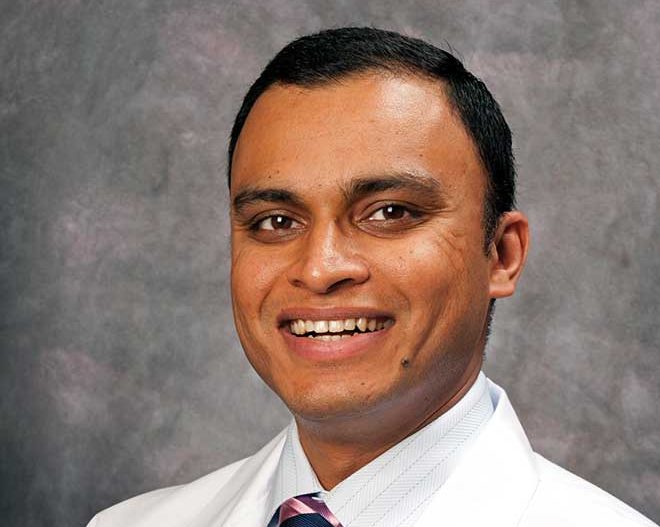If it weren’t for a second opinion from doctors at SSM Health St. Mary’s Hospital, Gloria Whitehead might have lost her leg. And if it hadn’t been for Anish Thomas, M.D., interventional cardiologist, Whitehead says life would have been quite different. Thanks to him, though, her peripheral artery disease (PAD) is in check and her arteries are open for business.
PAD is a common circulatory problem in which peripheral arteries, those that carry blood to limbs, organs and the head, become narrowed by plaque, reducing blood ow. Thomas cautions that if these arteries are blocked, there’s a good chance the coronary arteries that serve the heart may be as well. Because of the risk of heart attack and other conditions, paying attention to early warning signs is particularly important, he says. “While it’s possible to have no symptoms at all, leg cramps, or ‘claudication,’ can be a sign that something is wrong,” Thomas says. “But often, these can be confused for the simple pains or tightening that come with exertion.” In addition to heart attack, the build-up of plaque also can cause critical limb ischemia (lack of blood supply), leading to gangrene and tissue death.
“Surgical bypass used to be the only option for PAD, but there has been a paradigm shift over the past 15 years, and now we have the tools to open up the blockage from within the vessel,” Thomas explains. Miniature instruments inserted via catheter through a puncture hole in the skin are used to balloon and stent arteries, and even to drill plaque away in more severe cases. These mostly outpatient procedures usually are performed under local anesthetic with mild sedation.
Although this kind of treatment is becoming the norm, SSM Health St. Mary’s is somewhat of a leader in the field, Thomas says, explaining that he treats 200 to 300 patients a year, many coming from afar. “We have a broad patient population, and a lot of our cases are more technically challenging due to failed procedures elsewhere,” he notes. Thomas put at least four stents in Whitehead’s leg; another doctor from St. Mary’s treated her coronary arteries, which also were affected. And she’s a happy camper, saying, “They have done a wonderful job.”
As for risk factors, Thomas says some can be controlled and some can’t. Whitehead is diabetic and used to smoke, both of which put her in a higher risk bracket. “The truth is, you can control the cigarettes you smoke, but not your family history,” Thomas says. Whitehead, meanwhile, is hopeful of a healthy future. She says she goes to St. Mary’s regularly for check-ups and has altered her eating habits. “I’m not perfect,” she laughs. “But I’ve made some changes, and I think they’re going to stick.”
Pictured: Dr. Anish Thomas
Photo courtesy of SSM Health
At five SSM Health hospitals around the region, SSM Health Heart & Vascular Care offers advanced treatments and technologies for a host of heart and vascular issues. Pictured on the cover: Dr. Anish Thomas. For more information on peripheral artery disease and SSM Health Heart & Vascular Care, visit ssmhealth.com/heart or call 866.SSM.DOCS.
Cover design by Allie Bronsky | Cover photo by Bill Barrett
